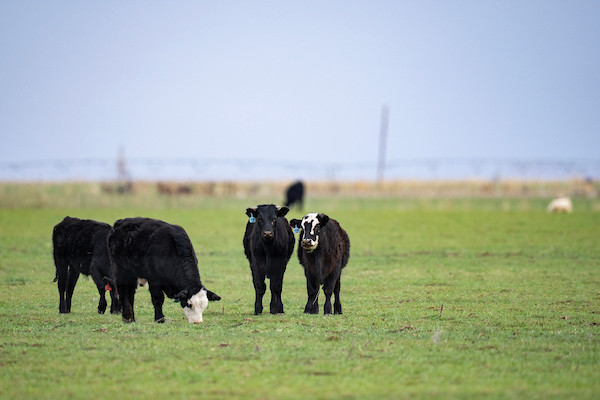Report on Proposed ITPGRFA Expansion and Implications for Sustainable Development Goals
Executive Summary
A consortium of Indian agricultural scientists and policy experts has formally appealed to the Union Agriculture Minister, Shivraj Singh Chouhan, regarding a proposal at the International Treaty on Plant Genetic Resources for Food and Agriculture (ITPGRFA) meeting in Lima, Peru. The appeal expresses significant concern that a proposed expansion of the treaty’s scope to include all plant genetic resources could undermine India’s national sovereignty, jeopardize farmers’ rights, and conflict with the principles of several Sustainable Development Goals (SDGs), particularly those related to hunger, biodiversity, and inequality.
Analysis of the Proposed Treaty Amendment
The central issue is a proposed amendment to the ITPGRFA that seeks to expand the multilateral system of access and benefit-sharing from a negotiated list of key crops to encompass all plant genetic resources. Experts argue this shift from a negotiated to a universal access model presents critical challenges.
- Threat to National Sovereignty: The proposal is seen as a direct challenge to a nation’s sovereign rights over its genetic resources, potentially overriding domestic legislation such as India’s Biodiversity Act.
- Impact on Farmers’ Rights: The move could severely impact the established rights of farmers to save, use, exchange, and sell farm-saved seeds, which is a cornerstone of local agricultural practices.
Alignment with Sustainable Development Goals (SDGs)
The concerns raised by the experts directly intersect with the 2030 Agenda for Sustainable Development. The proposed changes to the ITPGRFA could have adverse effects on the achievement of multiple SDGs.
SDG 2: Zero Hunger
- Plant genetic resources are the foundation of global food security and agricultural resilience. Unrestricted access without equitable benefit-sharing could disincentivize conservation at the local level.
- Protecting farmers’ rights to their seeds is crucial for maintaining crop diversity and ensuring stable food production, which are key targets under SDG 2.
SDG 15: Life on Land
- The proposal directly relates to SDG Target 15.6, which calls for the fair and equitable sharing of benefits arising from the utilization of genetic resources.
- Experts, including former scientists from the National Bureau of Plant Genetic Resources (NBPGR) and representatives from Gene Campaign, argue that India, as a nation rich in biodiversity, must prevent any erosion of its sovereign control over this vital resource, a core principle of SDG 15.
SDG 10: Reduced Inequalities & SDG 1: No Poverty
- A significant concern is the existing imbalance where developing countries, including India, are primary providers of genetic resources, while developed nations are the primary users.
- The proposed revisions to the “access and benefit sharing” (ABS) mechanism are deemed inadequate. Experts note that payment rates are insufficient to generate funds commensurate with the value of the genetic diversity being accessed, thereby failing to reduce inequalities (SDG 10) or alleviate poverty in farming communities that conserve these resources (SDG 1).
Recommendations and Call for Action
In their letter to the minister, the experts outlined a clear path forward for India’s delegation, urging the government to champion a position that upholds both national interests and global sustainability objectives.
- Urgent Intervention: The government is called upon to intervene immediately in the ongoing negotiations in Lima.
- Lead Negotiations for Equity: India is urged to take a leadership role in the negotiations to strike a fair and equitable balance between the providers and users of plant genetic resources.
- Uphold Rights and Ensure Security: The ultimate goal of the intervention should be to secure a future where global food security is enhanced and the rights of communities that conserve biodiversity are justly protected, in full alignment with the Sustainable Development Goals.
Which SDGs are addressed or connected to the issues highlighted in the article?
Explanation of Identified SDGs
The article discusses issues related to the conservation of plant genetic resources, farmers’ rights, food security, and the fair sharing of benefits from biodiversity. These themes directly connect to several Sustainable Development Goals.
- SDG 2: Zero Hunger: The article explicitly links plant genetic resources to food production, stating they “constitute the foundation of its agriculture and food production” and that fair negotiations are needed to ensure “global food security.” This directly addresses the goal of ending hunger and promoting sustainable agriculture.
- SDG 15: Life on Land: The core of the article is about protecting “plant genetic resources” and “biodiversity.” It highlights the concern over losing sovereign rights over these resources and mentions India’s “Biodiversity Act,” connecting directly to the goal of protecting terrestrial ecosystems and halting biodiversity loss.
- SDG 17: Partnerships for the Goals: The issue is framed within the context of an “ongoing global meet in Lima, Peru” involving the “International Treaty on Plant Genetic Resources for Food and Agriculture (ITPGRFA).” The call for India to “take the lead in negotiations to strike a fair and equitable balance for all stakeholders” and the noted disparity between developing “providers” and developed “users” of genetic resources points to the need for effective and equitable global partnerships.
What specific targets under those SDGs can be identified based on the article’s content?
Explanation of Identified Targets
The article’s specific concerns and calls to action align with several SDG targets.
- Target 2.5: “By 2020, maintain the genetic diversity of seeds, cultivated plants and farmed and domesticated animals and their related wild species… and promote access to and fair and equitable sharing of benefits arising from the utilization of genetic resources…” This target is central to the article, which focuses on the governance of “plant genetic resources,” the need to protect them, and the debate over “access and benefit sharing.”
- Target 15.6: “Promote fair and equitable sharing of the benefits arising from the utilization of genetic resources and promote appropriate access to such resources, as internationally agreed.” This is explicitly discussed when the experts flag concerns over the “draft proposal on revising the existing terms of ‘access and benefit sharing'” and note that the current system is failing.
- Target 15.9: “By 2020, integrate ecosystem and biodiversity values into national and local planning, development processes…” The article’s reference to India’s “Biodiversity Act” as a domestic legislation that could be compromised by the international proposal shows the importance of integrating biodiversity values into national law, which is the essence of this target.
- Target 17.16: “Enhance the global partnership for sustainable development, complemented by multi-stakeholder partnerships…” The entire conflict described in the article is taking place within a global partnership (the ITPGRFA). The call for a “fair and equitable balance” is a call to reform this partnership to make it more effective and just for all members, particularly developing countries.
Are there any indicators mentioned or implied in the article that can be used to measure progress towards the identified targets?
Explanation of Identified Indicators
While the article does not cite specific SDG indicator codes, it mentions or implies several metrics and qualitative assessments that serve as indicators of progress or lack thereof.
- Implied Indicator for Target 2.5 & 15.6 (Benefit Sharing): The article provides a clear, negative indicator for the current benefit-sharing mechanism: “after millions of seed transfers, very few monetary contributions have materialised.” This implies that a key indicator for success would be the volume and fairness of monetary contributions generated and distributed from the use of genetic resources.
- Implied Indicator for Target 2.5 (Farmers’ Rights): The article states the proposed move could “impact farmers’ rights to save, use, exchange, and sell their farm-saved seeds.” Therefore, the legal protection and practical ability of farmers to exercise these rights serves as a crucial indicator for maintaining agricultural biodiversity at the local level.
- Indicator for Target 15.9 (National Frameworks): The existence and strength of national legislation like “India’s Biodiversity Act” serves as an indicator for Target 15.9 (Indicator 15.6.1 also tracks this). The article’s concern that this domestic law could be “overridden” highlights its importance as a measure of national commitment to biodiversity.
- Implied Indicator for Target 17.16 (Partnership Equity): The article points to an imbalance where “developing countries, including India, being the providers of genetic resources and developed ones using them.” The degree to which this imbalance is corrected and a “fair and equitable balance for all stakeholders” is achieved in negotiations serves as a qualitative indicator of the partnership’s equity and effectiveness.
Table of SDGs, Targets, and Indicators
| SDGs | Targets | Indicators (Mentioned or Implied in the Article) |
|---|---|---|
| SDG 2: Zero Hunger (Ensuring “global food security” through protection of genetic resources for “agriculture and food production”) |
Target 2.5: Maintain genetic diversity of seeds and cultivated plants and ensure fair and equitable benefit-sharing. | The legal and practical status of “farmers’ rights to save, use, exchange, and sell their farm-saved seeds.” |
| The amount of “monetary contributions” generated from the transfer and use of genetic resources. | ||
| SDG 15: Life on Land (Protecting “biodiversity” and a nation’s “sovereign rights over its genetic resources”) |
Target 15.6: Promote fair and equitable sharing of benefits from the utilization of genetic resources. | The fairness and adequacy of “payment rates and mechanisms” in the revised terms of “access and benefit sharing.” |
| Target 15.9: Integrate biodiversity values into national planning and legislation. | The existence and enforcement of domestic legislation like “India’s Biodiversity Act” to protect national genetic resources. | |
| SDG 17: Partnerships for the Goals (Negotiating within a global treaty framework like the ITPGRFA) |
Target 17.16: Enhance the global partnership for sustainable development. | The achievement of a “fair and equitable balance for all stakeholders,” particularly between developing countries (providers) and developed countries (users) in international negotiations. |
Source: timesofindia.indiatimes.com







